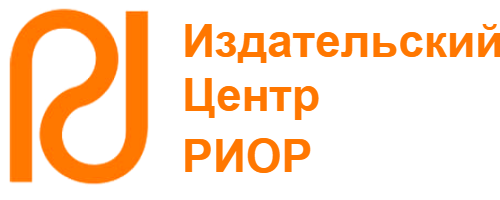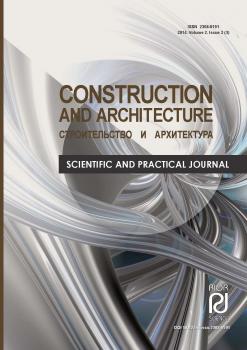Russian Federation
Russian Federation
The use of information modeling tools at all stages of the life cycle of a capital construction object allows you to analyze design information in order to make the most correct decision, while significantly reducing the uncertainty of processes by increasing the amount of data available for analysis. One of the labor-intensive processes at the design stage is the selection of the most suitable structural elements, including translucent structures. As part of the work, the normative and reference information related to the calculation of the heat-shielding characteristics of building structures has been analyzed, scientific developments and publications devoted to the automation of the implementation of heat engineering calculations using various software tools are considered. For the purpose of the study, two indicators were calculated: the normalized value of the reduced heat transfer resistance and the reduced heat transfer resistance of the window. To solve the problem, such automation tools as the Dynamo visual programming tool and the Python programming language were used, with the help of which a script was developed for calculating the thermal performance of windows for use in Autodesk Revit (Autodesk, Inc., USA). As part of the study, it was determined that the combined use of the Dynamo visual programming tool and the Python text programming tool, expanding the functionality of Autodesk Revit, made it possible to automate the task of calculating the reduced heat transfer resistance of a window and the normalized heat transfer resistance, taking into account conditions of a specific construction region.
Information Modeling, Information Model, Automation, Thermal Performance, Dynamo, Python
1. Ginzburg A., Shilov L., Shilova L. The methodology of storing the information model of building structures at various stages of the life cycle. Journal of physics: conference series. International Scientific Conference on Modelling and Methods of Structural Analysis 2019, MMSA 2019 (2020)
2. Ginzburg A.V. Building life cycle information modelling. Promyshlennoe i grazhdanskoe stroitelstvo [Industrial and Civil Engineering], 9, 61-65 (2016)
3. Volkov A. General information models of intelligent building control systems: basic concepts, determination and the reasoning. Applied Mechanics and Materials, vol. 838-841, 2973-2976 (2014)
4. Volkov A., Chulkov V., Kazaryan R., Gazaryan R. Cycle reorganization as model of dynamics change and development norm in every living and artificial beings. Applied Mechanics and Materials, vol. 584-586, 2685-2688 (2014)
5. Talapov V.V. BIM Technology. Essence and features of building information modeling introduction. DMK Press, Moscow (2015)
6. Ginzburg A. LE IM living environment information modelling. 2018 INTERNATIONAL SCIENTIFIC CONFERENCE ENVIRONMENTAL SCIENCE FOR CONSTRUCTION INDUSTRY, ESCI (2018)
7. Ginzburg A.V. Building life cycle information modelling. Promyshlennoe i grazhdanskoe stroitelstvo [Industrial and Civil Engineering], 9, 61-65, (2016).
8. Ginzburg A.V. LE IM Living Environment Information Modelling // International Scientific Conference Environmental Science for Construction Industry, ESCI 2018; Ho Chi Minh City; Viet Nam: MATEC Web of Conferences, Volume 193, 05030 (2018)
9. Glikin C.M. Rol' svetoprozrachnyh konstrukciy v energosberezhenii zdaniy // Academia. Arhitektura i stroitel'stvo. 381-384 2009. №5.
10. Mikhailov S., Mikhailova A., Nadyrshine N., Nadyrshine L. BIM-technologies and digital modeling in educational architectural design. International Scientific Conference on Socio-Technical Construction and Civil Engineering (STCCE - 2020), vol. 890 (2020).
11. Tikhomirov A., Konstantinov A., Kurushkina K., Lambias Ratnayake M. Conception of a complex window design method Topical Problems of Architecture, Civil Engineering and Environmental Economics (TPACEE 2018) E3S Web of Conferences Vol. 91 (2019).
12. Tihomirov A.M., Konstantinov A.P., Kurushkina K.S. Proektirovanie okonnyh konstrukciy s primeneniem tehnologii informacionnogo modelirovaniya zdaniy. Nauka i biznes: puti razvitiya 11(89) 123-128 (2018).
13. Usenko V.V., Suhanova I.I. Opredelenie teplovyh poter' cherez naruzhnoe ograzhdenie v sovremennyh programmnyh kompleksah. Vserossiyskaya nauchno-prakticheskaya konferenciya BIM-modelirovanie v zadachah stroitel'stva i arhitektury, 152-155 (2018).
14. Korniyenko, S.V. Multifactorial forecast of thermal behavior in building envelope elements. Magazine of Civil Engineering, 52 (8), 25-37 (2014).
15. Korniyenko, S. Evaluation of thermal performance of residential building envelope. Procedia Engineering, 117, 191-196 (2015).
16. Predeina V. P. Automation of architectural model creation by means of visual programming in dynamo. BIM IN CONSTRUCTION & ARCHITECTURE (BIMAC 2021), 525-532 (2021).
17. GEORGIEV N. G., SHUMILOV K. A. On the comprehensive application of visual programming packages in BIM. BIM IN CONSTRUCTION & ARCHITECTURE (BIMAC 2021), 106-112 (2021).
18. SHISHINA D., SERGEEV P. Revit Dynamo: designing objects of complex forms. Toolkit and process automation features. ARCHITECTURE AND ENGINEERING, 3, Vol. 4, 30-38 (2019).
19. Mogilina V.S., Sazanova A.N., Shumilov K.A. Programmirovanie obolochek v dynamo c ispol'zovaniem PYTHON. Vserossiyskaya nauchno-prakticheskaya konferenciya BIM-modelirovanie v zadachah stroitel'stva i arhitektury, 173-177 (2018).
20. Divin N.V. Primenenie kodirovaniya na yazyke programmirovaniya PYTHON dlya avtomatizacii PK REVIT. Mezhdunarodnaya nauchno-prakticheskaya konferenciya Regional'nye aspekty razvitiya nauki i obrazovaniya v oblasti arhitektury, stroitel'stva, zemleustroystva i kadastrov v nachale III tysyacheletiya, 199-203 (2020).


















